Neri Oxman builds with melanin for Totems project
Neri Oxman's Mediated Matter Group at MIT has designed an installation using melanin — and says the skin pigment will inevitably be used in architecture.
A new commission for the XXII Triennale di Milano, the Totems sculpture features flesh-coloured plumes, formed by injecting liquid melanin into intricate channels within a 3D-printed transparent brick.
It is based on research the group has been doing into melanin as a material for design and architecture.
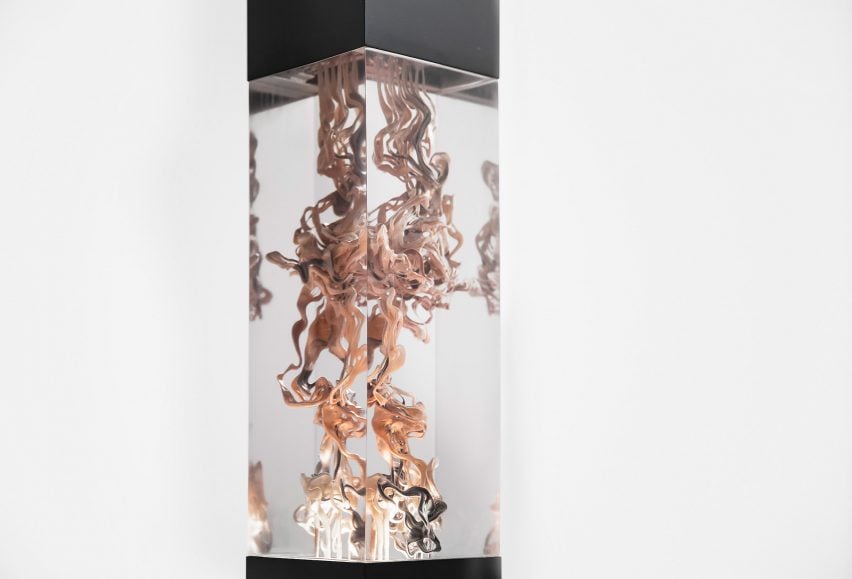
"The project is released during a time when biodiversity on planet earth is under momentous threat," said Oxman.
"My team and I have been in search of materials and chemical substances that can sustain and enhance biodiversity across living systems, which have thus far endured the perils of climate changes. Melanin is one such substance."
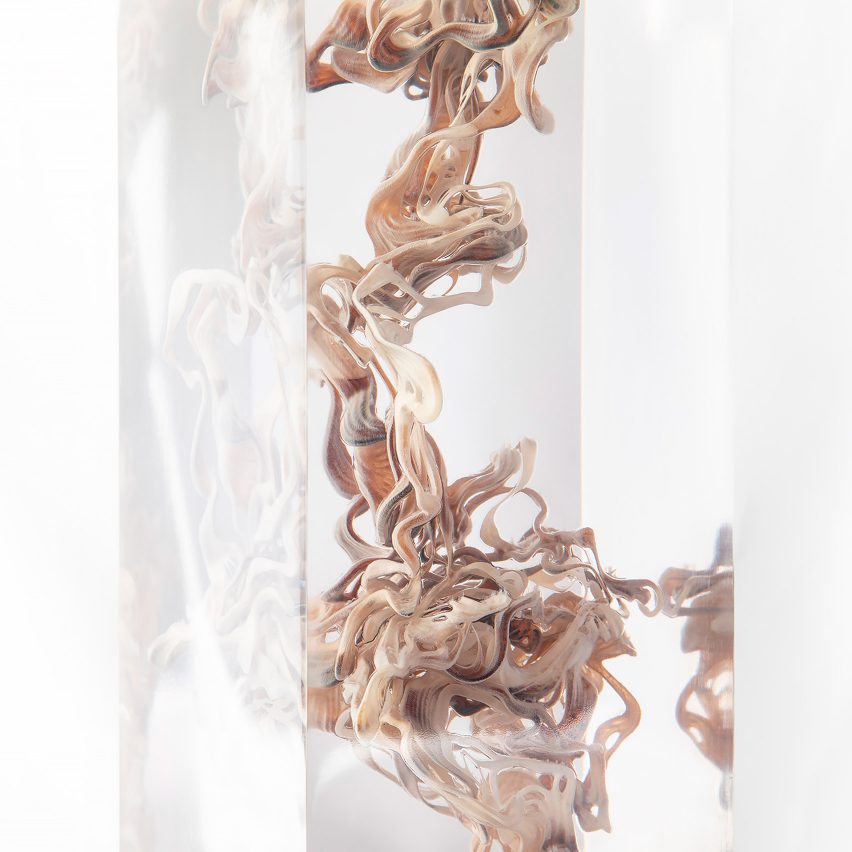
The pigment that gives colour to human skin, hair and eyes, melanin is found across the animal and plant kingdoms.
While it's well-known that melanin shields humans from the sun's UV radiation, the substance also has wider protective properties. Biologists have observed that it protects microorganisms from high temperatures, chemical stresses and biochemical threats.
Some fungi have even been seen to use melanin to harvest energy for cell growth. All of this makes melanin of interest to eco-focused researchers in architecture and design.
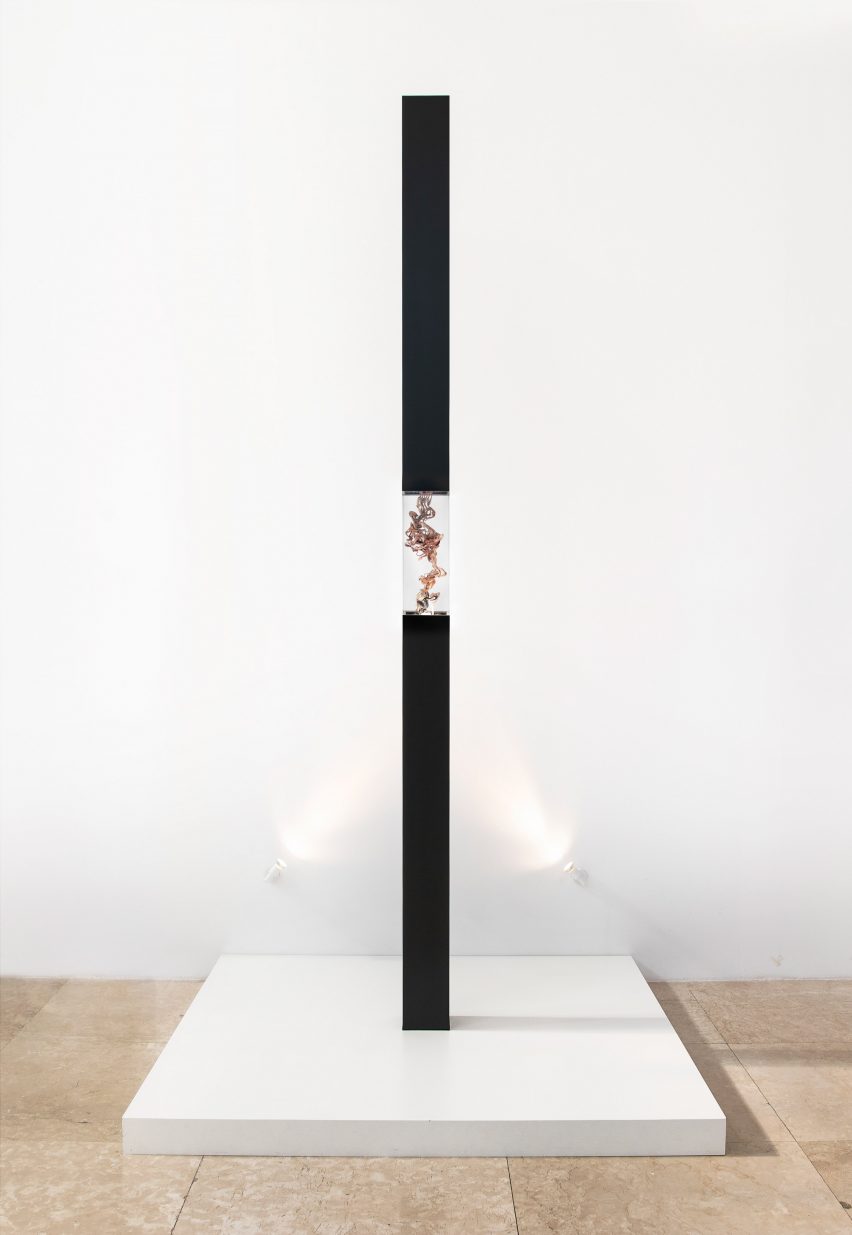
They are exploring how bio-based materials can integrate buildings and objects into the living systems around them, using natural processes to perform functions like energy production and waste recycling.
This is the promise of materials incorporating the likes of mycelium, algae and bacteria.
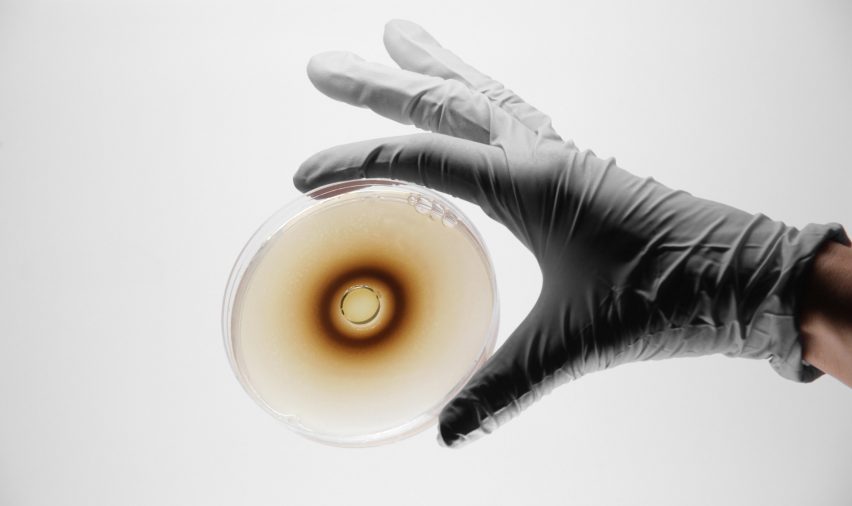
As well as the sculpture, the Mediated Matter Group is presenting an architectural proposal for a "first-of-its-kind biologically augmented facade" that would take Totems to a larger scale.
The group envisages that the several-storey-high glass structure would contain multiple types of melanin, including some obtained from organisms at the site. Once built, it would help shield endangered species from UV radiation during the day.
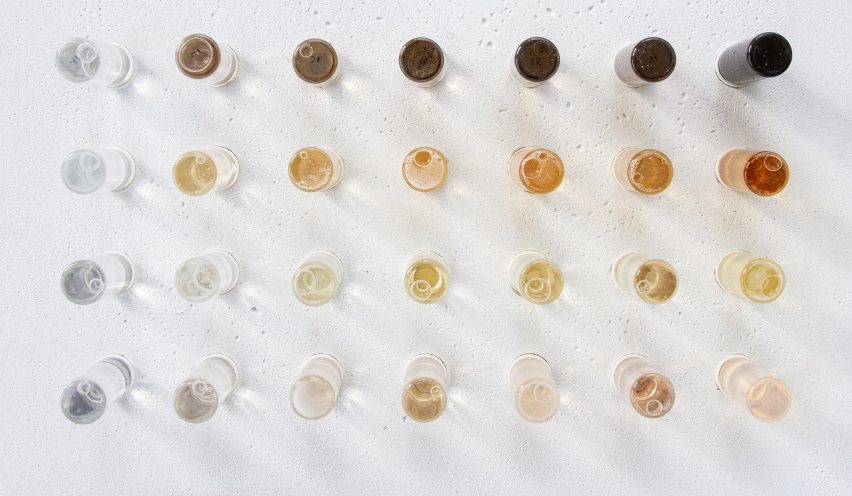
Oxman says the application of melanin and other biological substances in architecture in this way is "inevitable".
"Such objects, deployed on architectural and urban scales, will ultimately integrate 'barrier' functions, such as protection from impact or solar radiation by infusing building skins with concentration gradients, as well as 'mediation' functions that involve the external environment and internal, such as photosynthesis," she said. "In this way, these designed 'skins' act just as biological skin does."
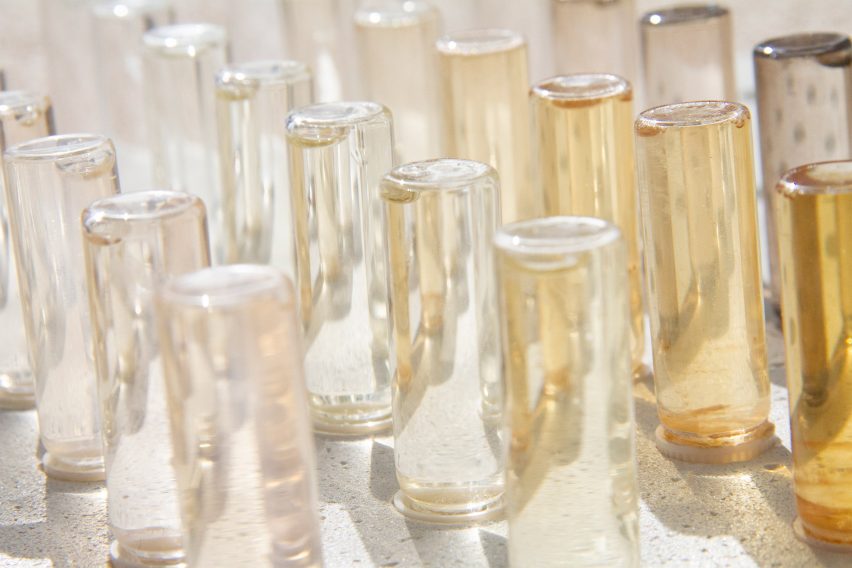
While Totems is a work of speculative design, Oxman says it is one that incorporates new scientific findings and has "potential real-world implications".
The Mediated Matter Group obtained melanin for the project in two separate ways — by extracting it from bird feathers and cuttlefish ink, and by synthesising it in the lab. The Totems sculpture contains melanin from six different species, each in its own distinct channel.
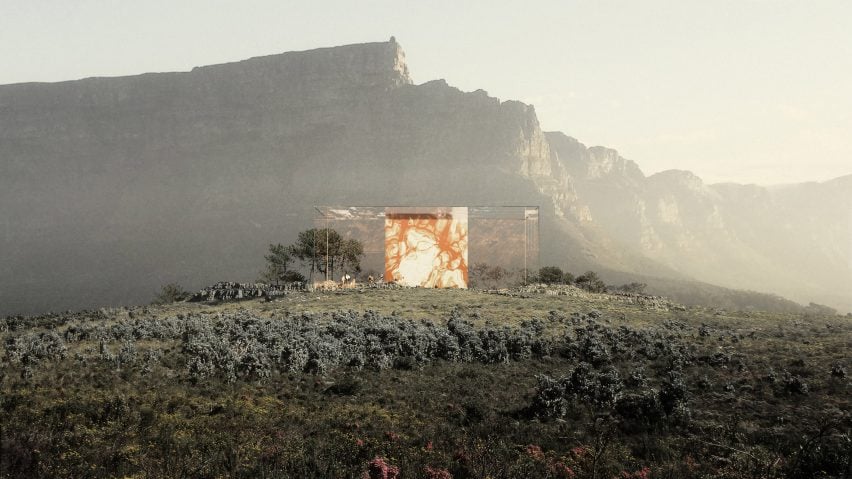
An earlier iteration of Totems saw the group inject the pigments into orbs, using the same process that went into the final piece, and building on the design techniques they used in their previous Lazarus and Vespers masks.
The complicated acrylic structures that contain the melanin — sometimes in pockets just millimetres thick — are 3D-printed by Stratasys.

The Mediated Matter Group selected the name Totems as a nod to the symbolic sculptures in the culture of the indigenous peoples of the Americas. The word comes from the North American Ojibwe language.
"In our project, we are revisiting the Totem as we acknowledge and commemorate diversity through biological (and chemical) diversity so essential to life on earth," said Oxman.
"If we are to continue to survive on this planet, we must return to this state of 'being' and universal wisdom previously recognised by indigenous peoples to whom this project is dedicated."
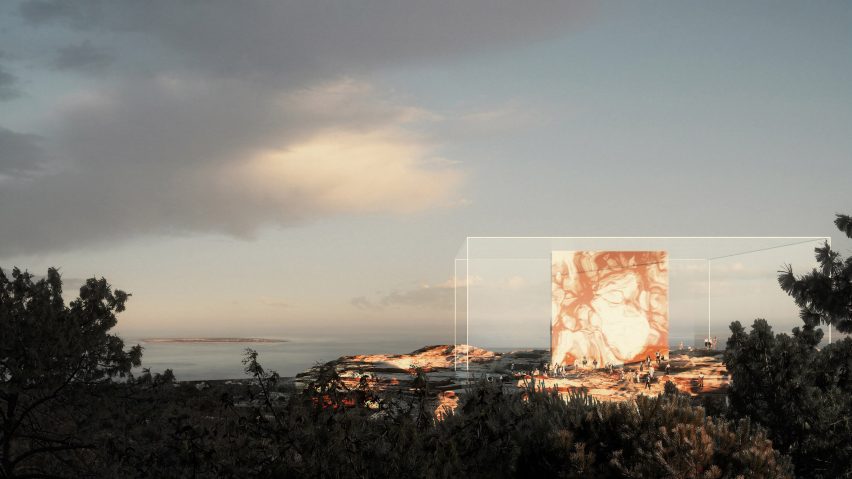
The project was initiated by Ravi Naidoo of Design Indaba and first introduced at that conference in 2018.
This new instalment was commissioned by curator Paola Antonelli for Broken Nature: Design Takes on Human Survival, the XXII Triennale di Milano exhibition, on from 1 March to 1 September, 2019. The exhibition looks at the extent to which humankind's relationship with the natural world has been severed and what can be done to reverse this.
Headed by Oxman, the Mediated Matter Group is part of the Massachusetts Institute of Technology's Media Lab and works at the intersection of design and biology.
In recent years the research group has produced a swarm fabrication system called Fiberbots and a Synthetic Apiary where it is always spring for bees.
Project credits
Project team: Neri Oxman and The Mediated Matter Group, MIT
Fabrication: Front, Bodino, Stratasys.
Bacterial strains: Dechuan Meng and Christopher Voigt
Video: The Mediated Matter Group
Renders: Eric de Broches des Combes
Installation production: Kelly Egorova
Music composition: Osvaldo Golijov